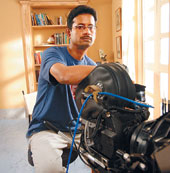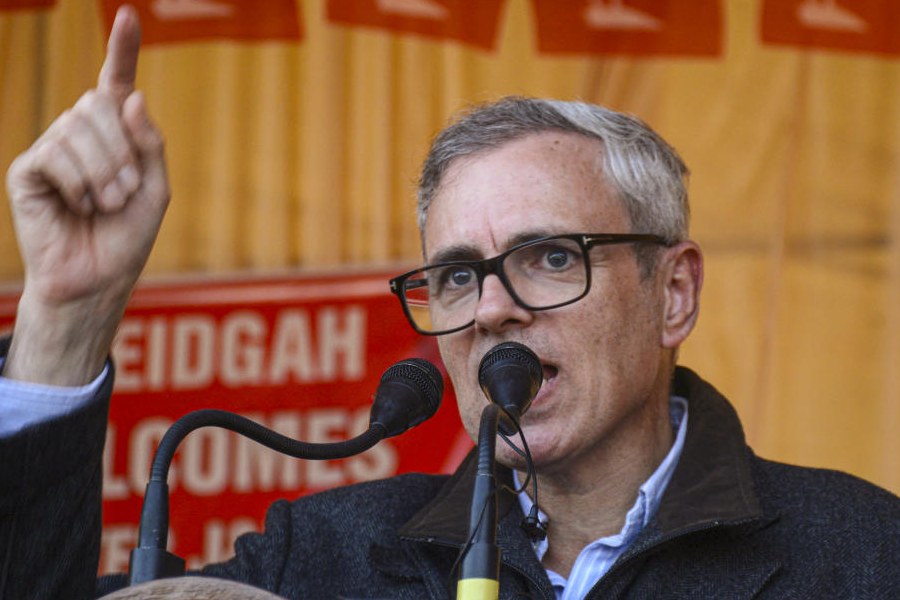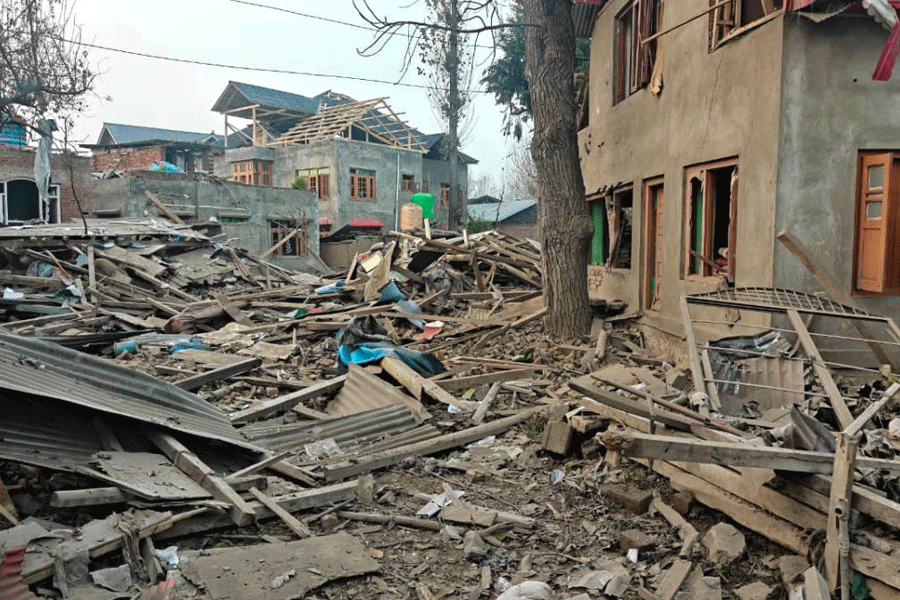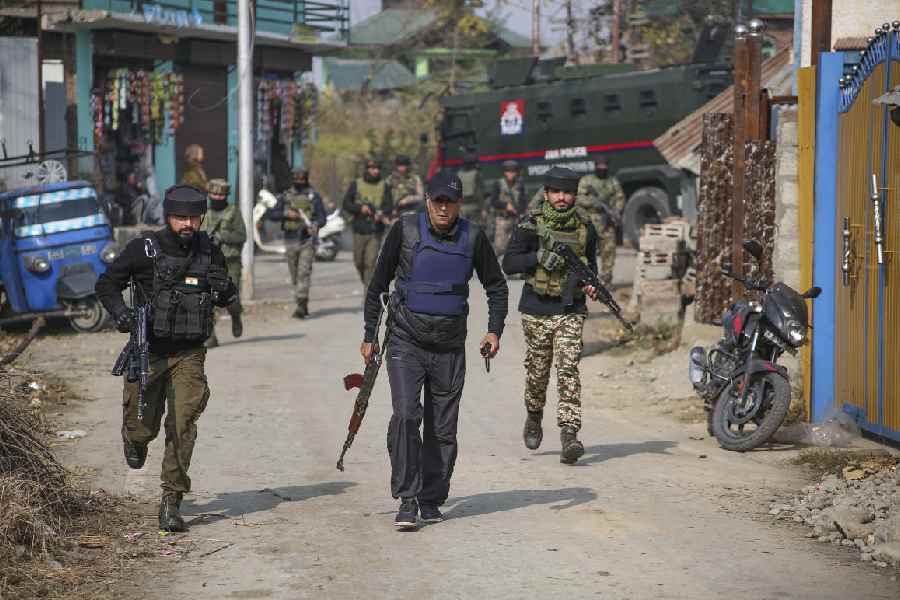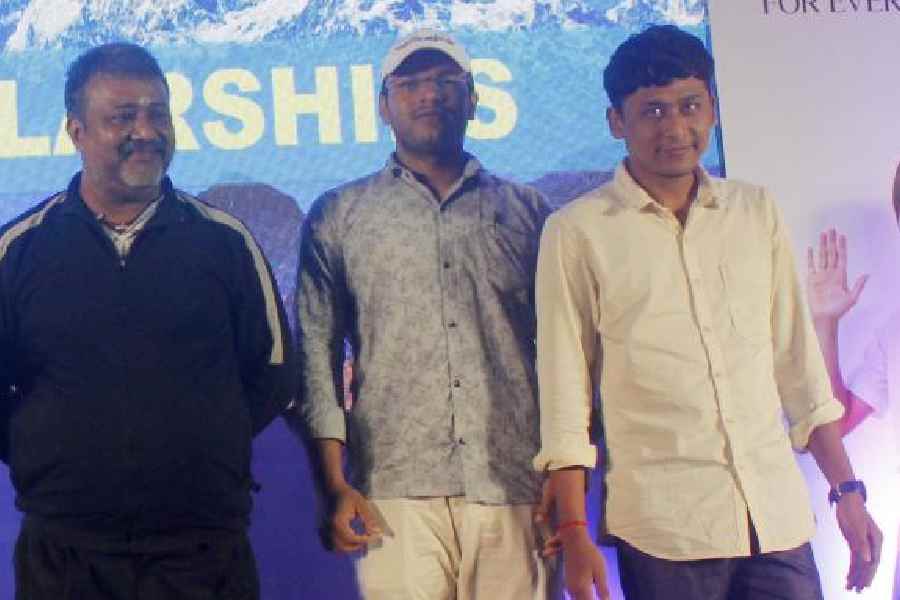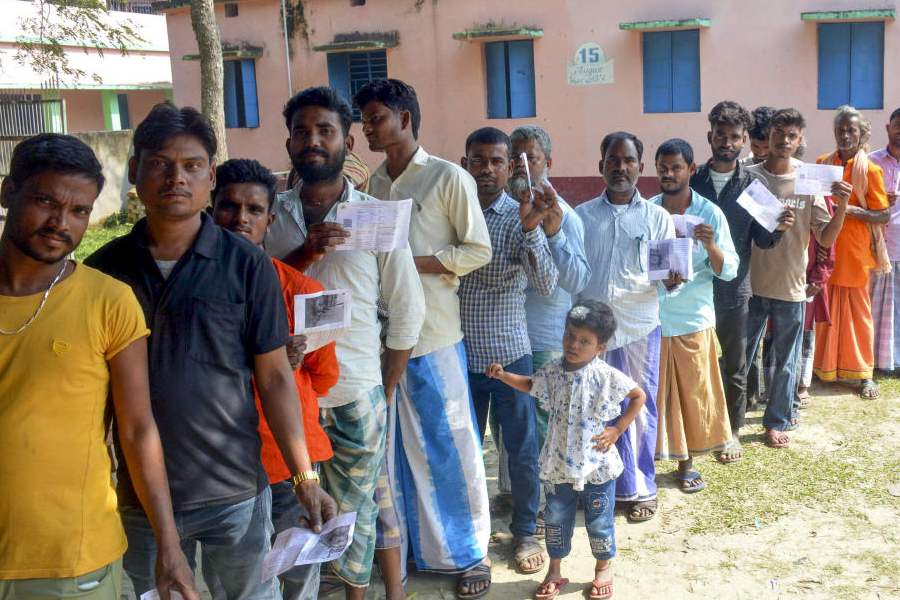 |
 |
 |
 |
 |
 |
 |
| (From top): Cinematographer Avik Mukherjee on the sets; wig-maker Mustakim (left) and make-up artist Subhas Bera at work on actor Prosenjit; singer and music director Zubin Garg; art director Kaushik Sarkar; designer Agnimitra Paul (right) helps actress Koel Mallick put together an outfit for Bandhan; cinematographer Rakesh Kumar on the sets of Abar Aashbo Phirey; poster-designer Goutam Barat |
It was a tough job for designer Agnimitra Paul. For months, she played to a new script, assembling 120 outfits for Bandhan, one of Tollywood?s most ambitious productions last year. The costumes created what Paul calls ?a posh new look for the industry, marrying Hindi film chic and style with a Bengali mood?.
She?s one of a new breed of fresh talent riding the renaissance of the Bengali film industry with new big budget productions. Also, older talents are getting a freer rein to show their skills, giving films a smarter edge. Says director Sudeshna Roy whose Shudhu Tumi was released late last year, ?Sets no longer look tacky.?
The industry?s new look stems, according to top industry guns, from huge action behind the scenes. Says Roy, ?Everything is improving ? scenic quality, sound quality, photography, costumes and locations.
And who is driving these screen successes? There are designers like Paul and art directors like Kaushik Sarkar who?s working on Criminal. Moreover, there are poster artists like Goutam Barat who ensure the right image for a film by making it look good on billboards.
The catalyst to this change is money. And it?s the combination of money and talent that?s helping make top productions that are slicker than ever. For example there?s Ravi Kinnagi?s Bandhan which had upmarket sets. The computer graphics used in Swapan Saha?s Debi or Haranath Chakraborty?s Sangram (2005) hit new levels of sophistication.
Similarly, there?s Varsha Bansal?s Nishi Japon directed by Sandip Ray, currently under production. ?Its background and technology is really new and trendy,? says director Rana Guha.
We take a look at some of the behind-the-scenes talent changing the face of Bengali cinema.
Agnimitra Paul, costume designer
Five years ago, Agnimitra Paul wouldn?t have been given a brief like the one she got for Bandhan. She had to design 120 costumes for both male and female stars. ?I?d never designed for men before and was apprehensive,? she says. In an early scene, the hero returns from abroad and needed a sophisticated look ? she opted for linen. Then, the scene switched to Singapore where costumes had to be more colourful. Says Paul, ?The variety of the clothes gave the Karan Johar kind of look to the film.?
Paul quickly learnt to adjust to reel life. For starters, she had to create both Western and Indian outfits. Then, there were the ?special requests? like the one from actress Koel Mullick who didn?t want her midriff exposed.
Paul started out in the fashion industry by retailing in Espee and other city boutiques. During a trip to Mumbai, she met Sridevi who ordered several outfits. Soon afterwards Sridevi asked her to do a few costumes for Koi Mere Dil Se Poochhe, Esha Deol?s debut film.
Things were looking up and Paul was asked to shift to Mumbai but couldn?t. Nevertheless, she got noticed in Calcutta and her first film, Mahakaal had her creating outfits for Rituparna Sengupta. Then, Venkatesh Films? Mani-Shrikant asked her to design costumes for the Koel-Jeet starrer Bandhan. There?s been no looking back ever since and Paul is now also personal designer to stars like Debasree Roy, Indrani Dutta and Riya and Raima Sen.
Kaushik Sarkar, art director
It?s been quite a journey for art director Kaushik Sarkar. After studying in Calcutta, he headed off to Bollywood to learn his trade. Soon he landed a job as joint art director in the Shah Rukh Khan-starrer Yes Boss.
After a few years, he had to return to Calcutta for family reasons, but got lucky soon enough. His first film, Sasurbari Zindabad got him noticed and he went on to do Jamaibabu Zindabad with Arup Ghosh for which they won a Bengali Film Journalists? Association award. Sarkar has also worked on films like Rituparno Ghosh?s Shubho Mahurat, Budhadeb Dasgupta?s Mondo Meyer Upakhhan and even Sangram.
?Dance sequences and fight scenes have maximum scope for creativity,? says Sarkar. He believes that art directors are doing good work nowadays as they have more freedom:?Earlier, there were special-effect shots on camera. But now graphics are being used, giving films a new dimension.?
In Shankar Roy?s Criminal, currently being shot, Sarkar created a plush swimming pool, one of the most lavish sets in Tollywood history.
Goutam Barat, poster designer
He emerged at a time when the industry was ruled by poster designers well over their 50s. ?I was young and full of fresh ideas,? he says. Besides, his father was also in the same profession and helped him gain a foothold.
Barat was noticed for the first time when he designed a poster for Abhimanyu. Then came films such as Goutam Ghosh?s Dekha and Mondo Meyer Upakhhan, which won international acclaim. But it was the sleek design of his poster for the Prosenjit-Koel starrer Badshah that gave the Bengali film industry a ?Bollywood feel? for the first time.
?I was the first to start ?concept shoots? here where a separate photo shoot is arranged with the actors for the posters and publicity,? says Barat. Other films popularised by such concept shoot include Saathi and Shongi. He adds, ?We are heavily influenced by Bollywood and to some extent, by the South Indian film industry.?
?The Bengali film industry?s designing is at par with Bollywood or Hollywood but we suffer when it comes to print quality. It?s the cost that?s defeating,? he explains. Out of 40 odd films made in a year, Barat makes posters for around 30, winning him the ?poster king? title.
A crucial change in poster design is that earlier film-makers wanted the whole cast shown. ?This resulted in a ?munda-mala?. But now they?ve realised it?s more sensible to have a less-cluttered poster with just the male and female leads,? he notes.
Avik Mukherjee, cinematographer
A graduate from the Pune film institute, Avik Mukherjee started out making commercials. Along the way, he made a few ads with director Rituparno Ghosh. So it wasn?t surprising when Ghosh asked him to do the cinematography for Ashukh. More work followed till he landed Chokher Bali, which earned him rave reviews. Says director Rana Guha, ?The entire visual ? from composition to lighting ? appealed.?
?Ritu and I relate well and the visual appeal and tone were discussed with the entire team before any final decisions were made,? adds Mukherjee, who feels there?s a massive change in Bengali film production quality. ?The audience is aware of the technical aspects like sound and cinematographic quality.? As such, producers also try to improve production and technical details. Besides, technical hands are mostly from film institutes so there is more ?professionalism?.
Another change Mukherjee notes is that ?these days there?s no dubbing. Directors use direct sound right from the location enhancing film quality.?
Subhash Bera, make-up artist
He became famous after he gave six different looks to Prosenjit in Sangram. In the film, Prosenjit tries to take revenge on his father?s murderers by disguising himself. Helped by wig-maker Mustakim, Subhash Bera transforms Prosenjit by turn into a Punjabi, Marwari, poet, hippie and even an old man. Finally, Prosenjit ends up in a hospital bandaged from head to toe ? again done by Bera.
?This was a far cry from what Bengali film audiences were used to,? says Bera who grew up near Hatibagan, a well-known theatre hub. His sister Rima Mondal is a veteran make-up artist and he considers make-up artist Subrata Sinha his guru.
Over the years, several prestigious assignments have come his way. He has done Anupam Kher?s make-up during a Calcutta shoot and has also been to Mumbai to work for Sarbani Mukherjee of Border fame. But Bera has been Prosenjit?s personal make-up man for over six years now and can?t stop praising him. ?If Prosenjit weren?t an actor, he?d make the best make-up artist in the world. I?ve learnt so much from him.?
Bera will be working his magic on Prosenjit yet again in Criminal. This time he?ll give the actor four different looks. Could this spell another hit?
Rakesh Kumar, cinematographer
Rakesh Kumar is the man behind the look of such films and serials as Abar Aashbo Phirey and Ek Akasher Nichey. After graduating from the Satyajit Ray Film Technicians? Institute, he worked as assistant director to Goutam Ghose in Dekha and Abar Aranya.
Then came his lucky break when he moved to Mumbai and was picked up as assistant cinematographer by Ravi Ojha for his Alpha Bangla serial Ek Akasher Nichey. He was also assistant cameraman in Aparna Sen?s Mr and Mrs Iyer. Abar Aashbo Phirey was praised for its sophisticated backdrops while the outdoor scene locations added that extra edge.
Kumar is currently working on a Bangladeshi commercial in Mumbai and talks are on for his next film by Khalid Mohammad. ?I learnt my craft in Calcutta and am familiar with the city,? he says. Naturally, he?s raring to work on a Bengali film yet again.
Zubin Garg, music director
Guwahati-based music director Zubin Garg has made a smooth foray into Bengali films. He was asked to do the music for Shudhu Tumi by friend and producer S.M. Bhura. ?I can speak Bengali fluently and had no problem. In fact, I used a few Assamese tunes that have been appreciated,? he says.
Garg is upbeat about changes in the production value of Bengali films and attributes it to ?bigger budgets and better camera quality and picturisation of songs?. ?If this continues, we?ll start making films like Black in the next 10 years. We just need the same budget and good teamwork.?
The music director?s next venture is a crossover film, Strings, which will be released at Cannes this year. ?The Kumbh Mela is the backdrop. I?ve used quite a few North-Eastern folk tunes and have also appeared on-screen in two songs,? he says.
Photographs by Pabitra Das and Sanjoy Chattopadhyaya

